Molly Larkin's Blog, page 18
May 21, 2014
Fed up yet? Watch this…

 FED UP is a new documentary the U.S. food industry doesn’t want you to see. But I think everyone simply must watch it.
FED UP is a new documentary the U.S. food industry doesn’t want you to see. But I think everyone simply must watch it.
If you follow my blog, you know my passion is human potential. Yet how can we reach our potential if our health is poor?
If you’re eating the Standard American Diet, your health is on the way to poor, if it isn’t already.
To Native Americans, the food provided by Mother Earth was sacred. Yet it’s becoming harder and harder to find food in the way Mother Earth intended.
So it’s of utmost importance that we educate ourselves. Knowledge is power.
Here’s what the film’s producers have to say:
“Everything we’ve been told about food and exercise for the past 30 years is dead wrong. FED UP is the film the food industry doesn’t want you to see. From journalist Katie Couric, Laurie David [Oscar winning producer of AN INCONVENIENT TRUTH] and director Stephanie Soechtig, FED UP will change the way you eat forever. The film is now playing in theaters across the country.”
Take just six minutes to watch the trailer and an interview with Katie Couric by Brendon Burchard. Then you decide.
“People are fed by the food industry, which pays no attention to health, and are treated by the health industry, which pays no attention to food.” Wendell Berry
May 14, 2014
What is your intention?

 When I work with clients in my healing practice, I ask them to set an intention as to what they want to get out of the session.
When I work with clients in my healing practice, I ask them to set an intention as to what they want to get out of the session.
They don’t even have to tell me what it is. But an important part of healing is to take an active role and let the universe know what you want.
Intention can be expressed as simply stating, “I am ____________.”
The “I am” is a statement of how you want to live your life.
Why you have to state your intention
I have found that not everyone wants to be healed – they may get some side benefit from illness that serves them, such as time off work, attention or sympathy.
And they may not even be aware of it.
Sometimes they have become so defined by their disability that they don’t know who they would be without it – it’s the only identity they know, so they are afraid to become a new person by becoming whole and healed.
That’s why we need to be clear on our intention so the universal forces know what we want to partner with them on.
We always have choice – let your choice be known: “I am ________. This is what I want, please.”
“Dormant forces, faculties, and talents come alive, and you discover yourself to be a greater person by far than you ever dreamed yourself to be.” Patanjali
Those “dormant forces” would be the power of angels, spirit guides, and mysteries of the universe. They are all waiting to help you – you just have to let them know what you want by stating your intention – your commitment.
Research on intention
Investigative journalist Lynn McTaggert’s books The Field: The Quest for the Secret Force of the Universe and The Intention Experiment: Using Your Thoughts to Change Your Life and the World
and The Intention Experiment: Using Your Thoughts to Change Your Life and the World are filled with research supporting the existence of an interconnected universe that responds to our thoughts!
are filled with research supporting the existence of an interconnected universe that responds to our thoughts!
The research gives credence to this statement by Dr. Wayne Dyer: “Intention is not something that you do, but rather a force that exists in the universe as an invisible field of energy!”
Intention creates an energy field you become a part of.
It explains the logic of this famous quote by Gandhi:
“Your beliefs become your thoughts,
your thoughts become your words,
your words become your actions,
your actions become your habits,
your habits become your values,
your values become your destiny.”
Thoughts follow intention
Thought is energy.
Everything that exists was a thought first. A thought that the inventor never let go of.
Steve Jobs was once quoted as saying, “Everyone has a cell phone, but no one likes their cell phone. I want to create a cell phone everyone loves.”
Where would we be if he came up with that thought and then said, “naa, no one can make that” and gave up?
Steve Jobs stated a goal, “I want to make a cell phone that everyone loves.”
His intention was to improve our lives through technology. That was his reason for being.
Then he followed the action steps to achieve the goal.
Intention is different than a goal, which is measurable and requires action on your part.
Intention requires effort, but of a different type. It requires consistent commitment. Intention is your purpose, the context of your life, and everything in your life.
If your intention is to be healthy [“I am vibrantly healthy”], you might improve your diet, incorporate exercise into your daily routine and make sure you manage your stress, instead of eating at McDonald’s and being a couch potato.
If your intention is to inspire people [“I am inspired and inspiring”], you might focus on sharing only inspirational quotes on Facebook, instead of negative complaints about the government.
If your intention is to heal the earth [“I am a caretaker of the earth”], you might focus on creating a recycling program in your place of business or your town, instead of throwing the recyclables into the trash.
Do you see the difference? It’s a way of being. And the way of being incorporates the action steps you take to manifest the way of being.
Commitment is part of intention
I have long cherished the following quote on commitment by W.H. Murray, from his book, The Scottish Himalayan Expedition. :
:
Until one is committed
there is hesitancy, the chance to draw back,
always ineffectiveness.
Concerning all acts of initiative [and creation],
there is one elementary truth,
the ignorance of which kills countless ideas
and splendid plans:
that the moment one definitely commits oneself,
then Providence moves, too.
All sorts of things occur to help one
that would never otherwise have occurred.
A whole stream of events issue
from the decision,
raising in one’s favor.
All manner of unforeseen incidents and
meetings and material assistance,
which no man could have dreamt
would have come his way.
I have learned a deep respect for one of Goethe’s couplets:
“Whatever you can do, or dream you can, begin it.
Boldness has genius, power and magic in it.”
It’s a variation on the Law of Attraction: what you focus on expands.
What is your intention?
What is your intention?
Why are you here?
What do you stand for?
What will be your contribution?
How will you make a difference?
Not just for others, but for yourself.
Fill in the blank: “I am __________________.”
It’s one thing to set and achieve goals, it just takes work. But when you are clear on your intention, that’s when the forces of the universe come in and lift you up to new heights. And everything becomes easier.
Your intention defines you, and any goals you have are held within the bowl of magic that defines your reason for being alive in the here and now.
What is it for you? Feel free to share in the comments below:
“I am __________.”
May 8, 2014
Are you thriving? Or merely surviving?

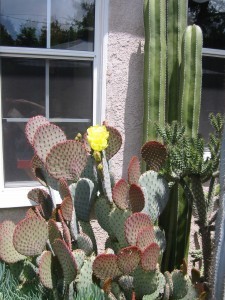 Are you thriving? Or merely surviving?
Are you thriving? Or merely surviving?
The first is not as hard to achieve as you might think.
Lessons from a cactus garden
In 1999 I bought my first house – in the San Fernando Valley of Southern California.
Earth lover that I am, I was excited about landscaping and, since the San Fernando Valley is a bit of a desert, that meant using native plants that would grow with the rainfall and sun usual for that area. Or so I thought.
My friends Bob and Laura were professional landscapers and offered to give me a landscaping consultation as a housewarming gift.
When I told them I wanted drought-tolerant plants and a cactus garden, the last thing I was expecting was the suggestion to put in a sprinkler system. But that’s exactly what they recommended.
Bob and Laura explained that, even with drought-tolerant plants, having a sprinkler system would make the difference between my garden thriving versus merely surviving.
Of course I wanted my garden to thrive, so I followed their advice, put in sprinklers, and never regretted it.
So what does this have to do with the rest of our lives? Plenty.
Getting your house in order
I know everyone wants money, because how to pray for money is my most popular post ever.
But having enough money is still simply surviving if you don’t have your emotional and spiritual houses in order.
My teacher Bear Heart, while a traditionally trained healer of his tribe, was also an ordained Baptist minister. So when his wife of 50 years, Edna, passed away, a memorial service took place in the Baptist Church they had attended in Oklahoma.
The service was rousing and moving, and the eloquent minister ended his message by reminding the congregation that, “Edna’s here with us today. And she’s asking us, she’s begging us, imploring us to get our houses in order. Because we’re all going to join her someday.”
I do believe that getting our houses in order is part of leading a life in which we thrive spiritually, emotionally and physically.
Thriving versus surviving
Surviving financially might mean we just barely are able to pay our bills each month. And perhaps incurring greater and greater debt.
Thriving financially means we can pay all our bills, as well as save and comfortably give some away.
It doesn’t mean we have an excess of money. Native Americans teach that anyone who has excessively more money than they needed has a mental illness. Hoarding is a mental illness, whether it’s money or things.
Surviving physically may mean we are alive, can function, walk and talk, but not play, run, skip or jump.
Thriving means our health is vibrant, we have plenty of energy to do the things we want, eat a healthy diet, and exercise because our bodies are fully functioning.
Surviving emotionally and/or spiritually may mean we go through life without joy.
Thriving means we find joy in every day.
Which spectrum do you find yourself on?
Keys to thriving
Here are some things I believe are key to living a thriving life:
Daily gratitude practice
Daily spiritual practice: prayer and/or meditation
Daily deep breathing practice
Daily exercise
Practicing forgiveness. Nothing is served by holding on to blame; no one is hurt but you.
Get healing: find whatever healers, mentors, counselors or courses will help you heal from the pain of the past so you can live fully in the present.
Getting a good night’s sleep – every night.
Tithing: regularly giving away 10% of your income to those causes or people who inspire you is the classic prosperity teaching.
Healthy eating: real food that you make yourself is far superior to manufactured food products. Eat organic as much as possible and avoid genetically modified foods.
Being a responsible caretaker of the earth – recycle.
Positive language and thoughts. Train yourself to use positive language about yourself and others. It’s like learning a new language, but it’s totally doable. I did it, so I know anyone can. And avoid gossip at all costs.
Balancing work with play and fun!
If you make an effort to incorporate these into your daily life, you will be getting your house in order.
And just like my cactus garden, with a little bit of extra water, you will thrive.
April 30, 2014
Why is the world’s largest garbage patch in the ocean?

 Did you know the world’s largest garbage patch is in the ocean?
Did you know the world’s largest garbage patch is in the ocean?
And that it consists of what was once hailed as a great future?
In the 1967 film, The Graduate, starring Dustin Hoffman, the new college graduate is cornered by a friend of the family with advice for his future:
Mr. McGuire: I want to say one word to you. Just one word.
Benjamin: Yes, sir.
Mr. McGuire: Are you listening?
Benjamin: Yes, I am.
Mr. McGuire: Plastics.
Benjamin: Exactly how do you mean?
Mr. McGuire: There’s a great future in plastics. Think about it. Will you think about it?
[Note: the bolded line is ranked #42 in the American Film Institute's list of the top 100 movie quotations in American cinema.]
Little did we know that the great future of plastics could turn out to be The Great Pacific Garbage Patch – and a persistent tragedy on our planet.
Sadly, very few people even know about it.
The Great Pacific Garbage Patch
A quick oceanography lesson:
A gyre is a naturally occurring vortex of wind and currents that rotate in clockwise direction in the northern hemisphere, and counterclockwise in the southern hemisphere.
There are five major oceanic gyres on the planet. The North Pacific Gyre is the largest ecosystem on Earth and it covers most of the Northern Pacific Ocean. It has a clockwise circular pattern formed by four prevailing ocean currents.
The whirlpool effect of the gyre collects plastic debris that has been discarded into the ocean. An ironic example of The Law of Attraction at work.
The “North Pacific gyre” is also known as the Great Pacific Garbage Patch.
It is full of man-made debris [mostly plastic] and is estimated to be at least twice the size of the state of Texas.
Swirling in the Pacific between California and Hawaii, it is the largest landfill in the world – floating in the ocean.
It is estimated that 11 million tons of floating plastic covers an area of 5 million square miles in the Pacific Ocean. Yes, that’s five million square miles.
The plastic is petroleum-based, making it full of chemicals and pollutants. Scientists refer to it as “toxic soup.”
The main problem with plastic, aside from the sheer volume of it, is that it is not biodegradable. That means, the plastic is there to stay –for hundreds of years.
However, it is photo-degradable, meaning it breaks down in the sun into smaller pieces of plastic.
These small pieces are mistaken by marine life for edible phytoplankton. So they eat it, yet cannot digest it, leaving no room in their bodies for real food.
They end up dying of starvation.
At least a million birds and marine animals die each year from consuming plastic or becoming caught in plastic debris.
The 19 islands of the Hawaiian archipelago receive massive quantities of plastic from the Gyres. Some beaches are buried under 5-10 feet of trash!
Approximately 80% of this plastic originates on land and 20% comes from recreational boaters, maritime industries and the military.
Is there a solution to the garbage patch?
Scientists are trying to rise to the challenge of cleaning it up, although some say it’s impossible to thoroughly clean a section of ocean the size of a continent and 100 feet below the surface.
Possibly the next best solution is to stop contributing to making it larger. Here’s a list of actions you can take:
1. Replace your use of plastic bags –bring canvas shopping bags to the grocery store. Most plastic is petroleum based, thereby adding to our demand for oil.
2. Bring lightweight cloth bags for your produce, rather than plastic bags. Search for cotton veggie bags – there’s a large selection out there.
3. Stop buying individual bottled water. [Some cities have banned their sale]. Buy a BPA-free water bottle and refill it from a home purification system. I keep a two-gallon BPA-free jug of pure well water in my car for refilling my water bottle when I’m out and about.
4. RECYCLE what plastic you do have.
5. Encourage your government to enforce international treaties that prohibit dumping garbage in the ocean.
6. Start a movement in your community to eliminate the use of plastic bags. Many communities around the world have done so. The first in the world was Bangladesh in 2002 after finding that plastic bags clogging their drainage systems was responsible for the 1988 and 1998 floods that submerged most of the country.
7. Lobby companies and your governments to find alternatives to plastic.
8. If not a ban, support a tax or fee on plastic bags. In Italy, Belgium and Ireland, plastic bag use dropped 94% within weeks of a 2002 tax.
If the above hasn’t inspired you to act, I believe this four minute film should provide plenty of incentive.
Thank you for doing what you can to keep plastic out of our waters and wildlife.
Sources for this article:
http://www.latimes.com/news/la-me-oce...
April 23, 2014
How does a traditional “medicine man” help people?
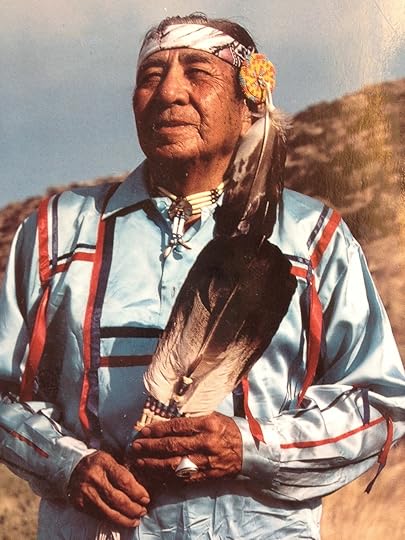
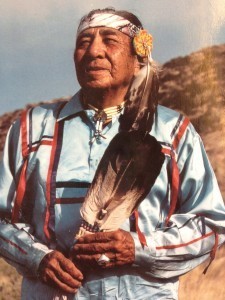 In 1988, reporter Mike Watkiss interviewed Muskogee Creek elder Marcellus “Bear Heart” Williams for the television show A Current Affair.
In 1988, reporter Mike Watkiss interviewed Muskogee Creek elder Marcellus “Bear Heart” Williams for the television show A Current Affair.
This first segment is Bear Heart’s answer to the questions: What is it that you do? How do you help people?
Traditionally trained as a healer of his tribe (what most people call a “medicine man),” Bear Heart speaks of some of the techniques he uses.
Look for more of this interview in future posts.
For more traditional Native American teachings read his book, The Wind Is My Mother .
.
April 16, 2014
Can We Save The Earth With Vinegar And Baking Soda?
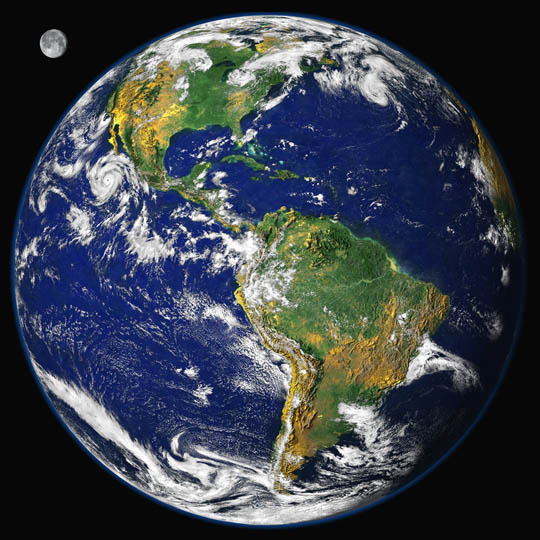
 Is there a way to save the earth from home? With vinegar and baking soda?
Is there a way to save the earth from home? With vinegar and baking soda?
Taking action in saving the earth should be a priority of us all.
And sometimes big changes are the result of many people taking small steps.
Can one person change the course of environmental destruction with vinegar and baking soda? Perhaps not. But suppose everyone stopped using toxic cleaning products? Read on.
Tuesday, April 22, 2014, is Earth Day, an annual event encouraging environmental protection. It’s an important reminder to us all of what’s at stake.
For some time, Native American elders have predicted the time of “Earth changes” – dramatic changes in weather patterns. Part of the prediction was that the weather would be in the headlines on a regular basis.
Yes, we’ve reached that point now — this is the fulfillment of Native American prophecy.
The experts say that some of the change in weather patterns cannot be reversed – we just have to learn to adapt to it.
But we can keep it from getting worse by changing some of our own habits and patterns:
1. Speak up! Let your government leaders know you want them to take action.
2. Recycle
3. Stop using plastic bags – bring canvas bags to the grocery store and lightweight cotton for your produce.
4. Change to non-toxic cleaning supplies for your home. Here’s an awesome list of what vinegar, baking soda and hydrogen peroxide can do:
The Awesome List:
SINK: Wash the sink with soap and water, then spray with white vinegar followed by hydrogen peroxide and let them dry.
DISH WASHER: Once a week, use baking soda and a damp sponge and wipe down the interior. Then run the dishwasher with Dishwater Magic.
REFIGERATOR: 1 T baking soda in 1 qt water to clean shelves.
OVEN: Get a non-stick liner for the bottom and run it through the dish washer.
SHOWER HEAD: Put white vinegar in a plastic bag and secure it around the shower head with rubber bands overnight.
DRAIN: Put ½ cup baking soda followed by 1 cup white vinegar down the drain; place a hot towel over it for 5 minutes then chase it down with boiling water.
TOILET: use Tang [it’s nontoxic and citric acid works as a scrubber] — 1 T in bowl, use a scrub brush, then flush.
STICKY RESIDUE from tape or a sticker: saturate it with white vinegar then wipe it off.
TRASHCAN: Pour vinegar on a piece of bread, let it soak up and place it on the bottom of the can overnight – no more smell.
ALL PURPOSE CLEANER: Fill spray bottle with 1/3 vinegar and the rest with water. Add a few drops of dish soap. It makes a safe and effective cleaner for bathroom and kitchen.
POTS AND PANS: for hard to clean stains, place the pot on the stove, add a cup or two of white vinegar and an equal amount of water. Boil it for 5 minutes.
5. Educate yourself:
Not convinced climate change is real? Knowledge is power. There is a riveting new documentary that just started on Showtime: “Years of Living Dangerously.” It covers how climate change is changing real lives around the world.
You can watch a 2-minute trailer here:
You can watch the entire premiere one-hour episode here: https://www.youtube.com/watch?v=brvhCnYvxQQ
I guarantee you will find it well worth your time.
We only have one planet to live on. Let’s join together to make it last.
April 9, 2014
Why Native American Children Walk in Beauty
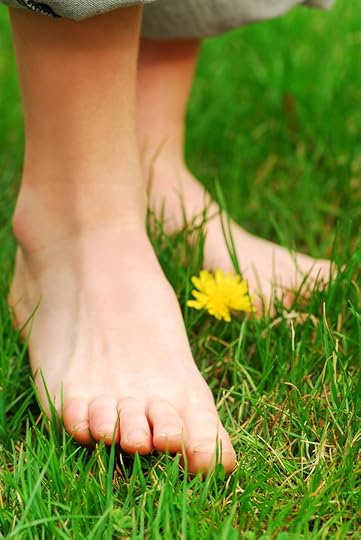

This excerpt from “The Wind Is My Mother” reveals how Native American mothers introduce their children to the natural world. It is also the key to their children growing up learning to respect Mother Earth, live balanced lives and walk in beauty.
Bear Heart speaks:
“When I was just three days old, my mother took me to a hill top near our home and introduced me to the elements.
“First she introduced me to the Four Directions — East, South, West and North. ‘I’m asking special blessings for this child. You surround our lives and keep us going. Please protect him and bring balance into his life.’
“Then she touched my tiny feet to this Mother Earth. ‘Dear Mother, Grandmother Earth, one day this child will walk, play and run on you. I will try to teach him to have respect for you as he grows up. Wherever he may go, please be there supporting and taking care of him.’
“I was introduced to the sun: ‘Grandfather Sun, shine upon this child as he grows. Let every portion of his body be normal and strong in every way, not only physically but mentally. Wherever he is, surround him with your warm, loving energy. We know that there will be cloudy days in his life, but you are always constant and shining — please shine through to this child and keep him safe at all times.’
“She lifted me up to be embraced by the breeze as she spoke to the wind: ‘Please recognize this child. Sometimes you will blow strong, sometimes you’ll be very gentle, but let him grow up knowing the value of your presence at all times as he lives upon this planet.’
“Next I was introduced to the water. ‘Water, we do not live without you, water is life. I ask that this child never know thirst.’
“She put some ashes on my forehead, saying, ‘Fire, burn away the obstacles of life for this child. Make the way clear so that he will not stumble in walking a path of learning to love and respect all of life.’
“And that night, I was introduced to the full moon and the stars.
“These elements were to watch over me as I grew up, running around on the carpet of grass that my Mother and Grandmother Earth provided, breathing in the air that sustains life and flows within my body, taking away all the toxins as I exhaled.
“I had a sense of belonging as I grew up because of my people’s relationship with these elements, and I imagine that’s why most of our people related to the environment so easily.
“We recognized a long time ago that there was life all around us — in the water, in the ground, in the vegetation. Children were introduced to the elements so that as we grew up, we were not looking down upon nature or looking up to nature.
“We felt a part of nature, on the same level. We respected each blade of grass, one leaf on a tree among many other leaves, everything.”
Surely the world would be a better place if every child were introduced to the natural world in this way? It’s not too late to start. What do you think?
April 2, 2014
How’s your hospitality?
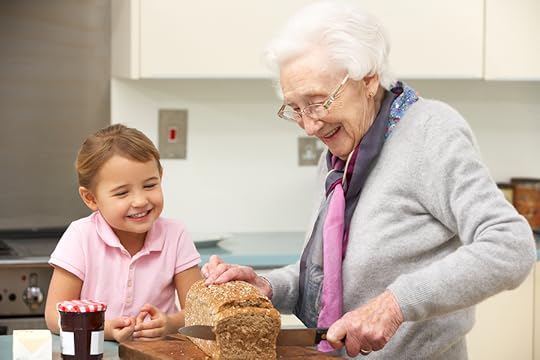
 Being a single, self-supporting woman for most of my adult life, I have mastered the art of taking good care of myself – whether at home or on the road. But an experience with European hospitality taught me I may have gone too far to the independent side.
Being a single, self-supporting woman for most of my adult life, I have mastered the art of taking good care of myself – whether at home or on the road. But an experience with European hospitality taught me I may have gone too far to the independent side.
Some years ago I went on a horseback tour of the Connemara region of western Ireland with Willie Leahy, master horse breeder and quintessential Irish storyteller.
A week of riding fine Irish horses through bogs, up green hillsides, around lakes and back roads where cars couldn’t go was a great way to see my homeland for the first time.
There were 14 in our group: 7 Americans and 7 Europeans and we had a choice of staying in 4-star hotels or charming bed and breakfasts. I chose the bed and breakfast because I felt it was the best way to get a feel for the people of Ireland.
As it turns out, I was the only American who chose a B&B – all the others stayed in hotels! And only one European chose a hotel – all the others stayed in the B&Bs.
For dinner the entire group ate together in a local restaurant; lunch was a picnic in a field along the way and breakfast was at our respective lodging. So I had breakfast every morning with the European contingent.
A traditional Irish breakfast is the perfect demonstration of the phrase, “Eat breakfast like a King, lunch like a prince and dinner like a pauper.” An Irish breakfast is a hearty meal designed to prepare one for a full day’s work on the farm. Or, as is more likely for today’s Irish tourists, a full day of sightseeing [or horseback riding].
You name it and it was on our breakfast table. So we all sat down on the first morning and I proceeded to reach for what I wanted, while the Europeans proceeded to serve one another:
“Would you like some toast?”
“Can I pour you a glass of juice?”
“Would you like milk for your tea?”
I stopped reaching and felt very small, very fast. My European housemates were the epitome of grace and hospitality. While I was just the opposite, taking what I wanted.
It was a lesson I took to heart. To this day, I attempt to put others first around the dining table, offering and serving and taking for myself last. But I confess to still being a work in progress in that regard.
Hospitality is a spiritual practice
The dictionary defines hospitality as the warm, friendly, generous reception of guests or strangers. It is a spiritual practice to make others feel accepted and at home.
Native Americans teach that when you give someone a gift of food, be it making them breakfast, buying them groceries or taking them out to dinner, it extends their life. That’s the ultimate form of hospitality.
In olden times, travelers would rely on innkeepers for lodging and food. The origin of the term “pub” stems from “public house” – a place where food is offered.
The term hospitality shares the same root as “hospital” – a place to go to be healed.
You don’t have to be an innkeeper or run a pub to employ hospitality. You don’t even have to be in your own home. Wherever you find yourself, you can:
Smile
Be friendly
Give sincere compliments – you will make another’s day brighter, as well as your own.
Give little gifts – it’s the thought that counts.
Even if you’re shy, introduce yourself to others – they may be feeling as shy as you and welcome someone to talk with
If you borrow something, return it in excellent or better condition.
Listen
There is a proverb: “He who practices hospitality entertains God himself.”
How do you make others feel good and welcomed? Please share below in the comments.



